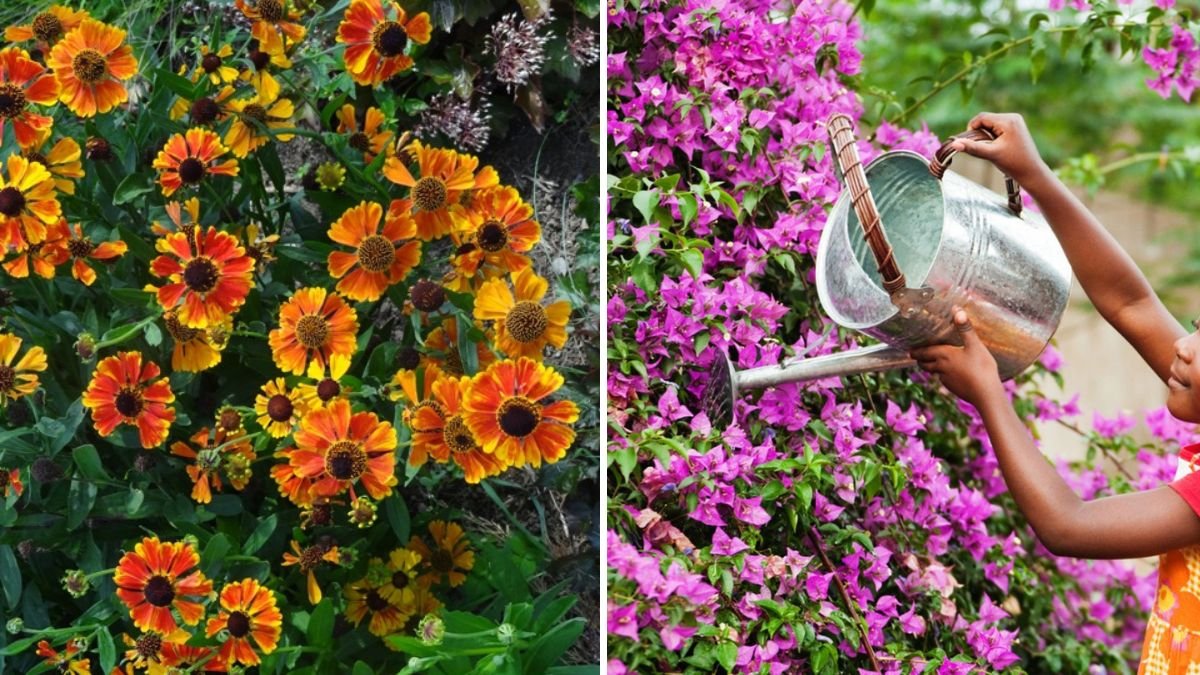Flower gardens are a source of beauty, tranquility, and personal satisfaction, but prolonged drought conditions can make maintaining them a significant challenge. Water scarcity, high temperatures, and intense sunlight can stress plants, reduce flowering, and even cause plant death. Efficient watering practices during droughts are essential not only to conserve water but also to ensure that your garden continues to thrive. This article provides in-depth guidance on how to water flower gardens during droughts, covering techniques, timing, soil management, and plant selection for sustainable and healthy gardens.
1. Understanding Plant Water Needs
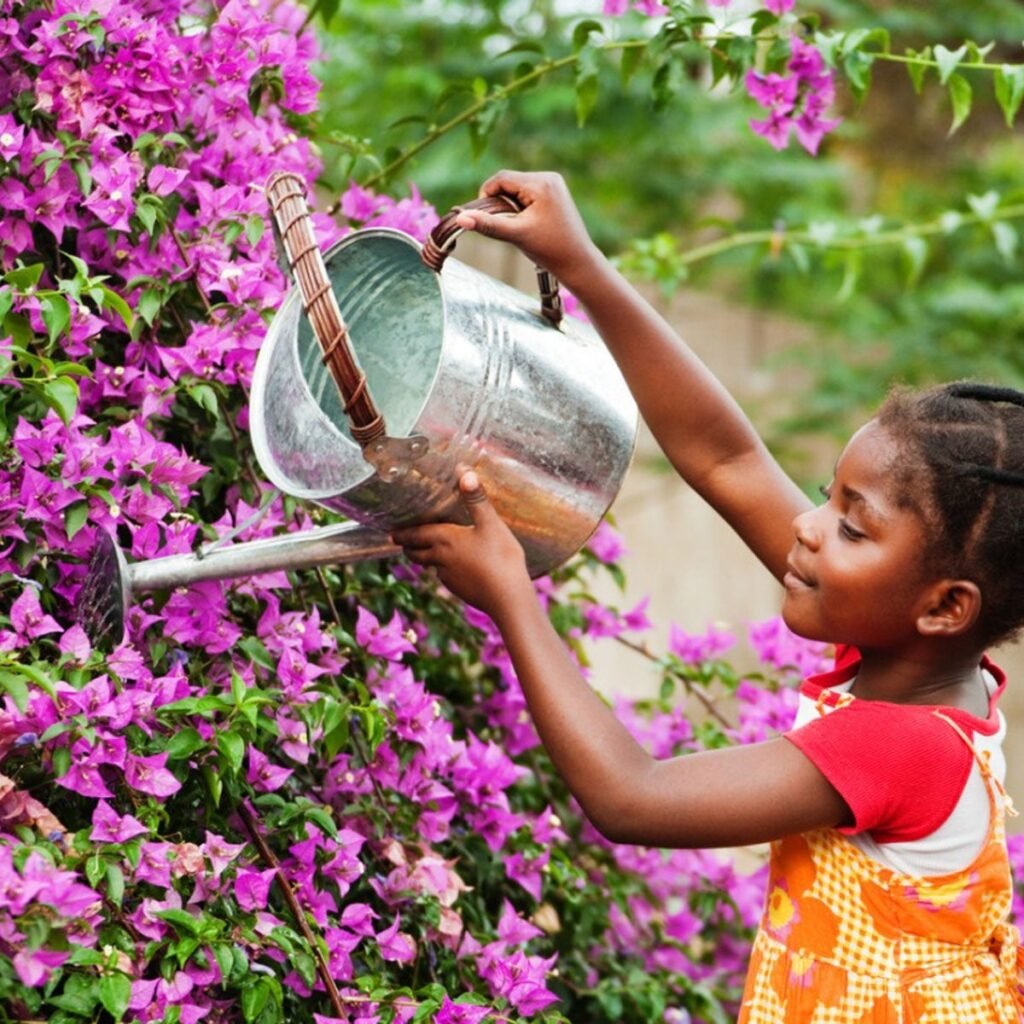
Different plants have varying water requirements, and understanding these needs is crucial during drought conditions:
- Deep-Rooted Plants: Perennials like daylilies, coneflowers, and lavender can access deeper soil moisture and require less frequent watering.
- Shallow-Rooted Plants: Annuals, petunias, and pansies need more frequent watering due to limited root depth.
- Flowering Stage: Plants in bloom require more water to support flower production and prevent wilting.
By identifying which plants need more or less water, gardeners can prioritize watering efforts, ensuring that resources are used efficiently.
2. Timing Is Everything
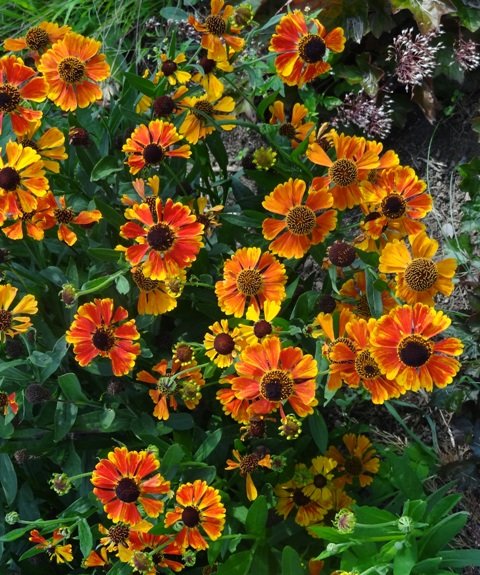
Watering at the right time of day maximizes absorption and minimizes evaporation:
- Early Morning: The best time to water is before sunrise. Cooler temperatures reduce water loss through evaporation, and plants can absorb water before the heat of the day.
- Evening Watering: If morning watering is not possible, water in the early evening, allowing plants to absorb moisture before nightfall. Avoid late-night watering in humid climates to reduce the risk of fungal diseases.
- Avoid Midday Watering: Watering during the hottest part of the day leads to high evaporation rates and reduces the effectiveness of irrigation.
Consistent timing also helps plants develop predictable hydration patterns, which improves drought resilience.
3. Efficient Watering Techniques
Using proper watering methods is key to maximizing water use during droughts:
a) Deep Watering
- Water at the base of plants slowly and deeply to encourage deep root growth.
- Shallow watering leads to weak, surface-level roots that are more susceptible to drought stress.
- Use soaker hoses, drip irrigation, or hand-watering at the soil level to target the root zone directly.
b) Mulching
- Apply a 2–4 inch layer of organic mulch, such as wood chips, straw, or compost.
- Mulch retains soil moisture, moderates soil temperature, and suppresses weed growth that competes for water.
- Keep mulch slightly away from the plant crown to prevent rot.
c) Water-Retaining Amendments
- Incorporate water-holding additives like compost, coconut coir, or vermiculite into garden soil.
- These amendments improve water retention and reduce the frequency of irrigation.
4. Prioritize Plants
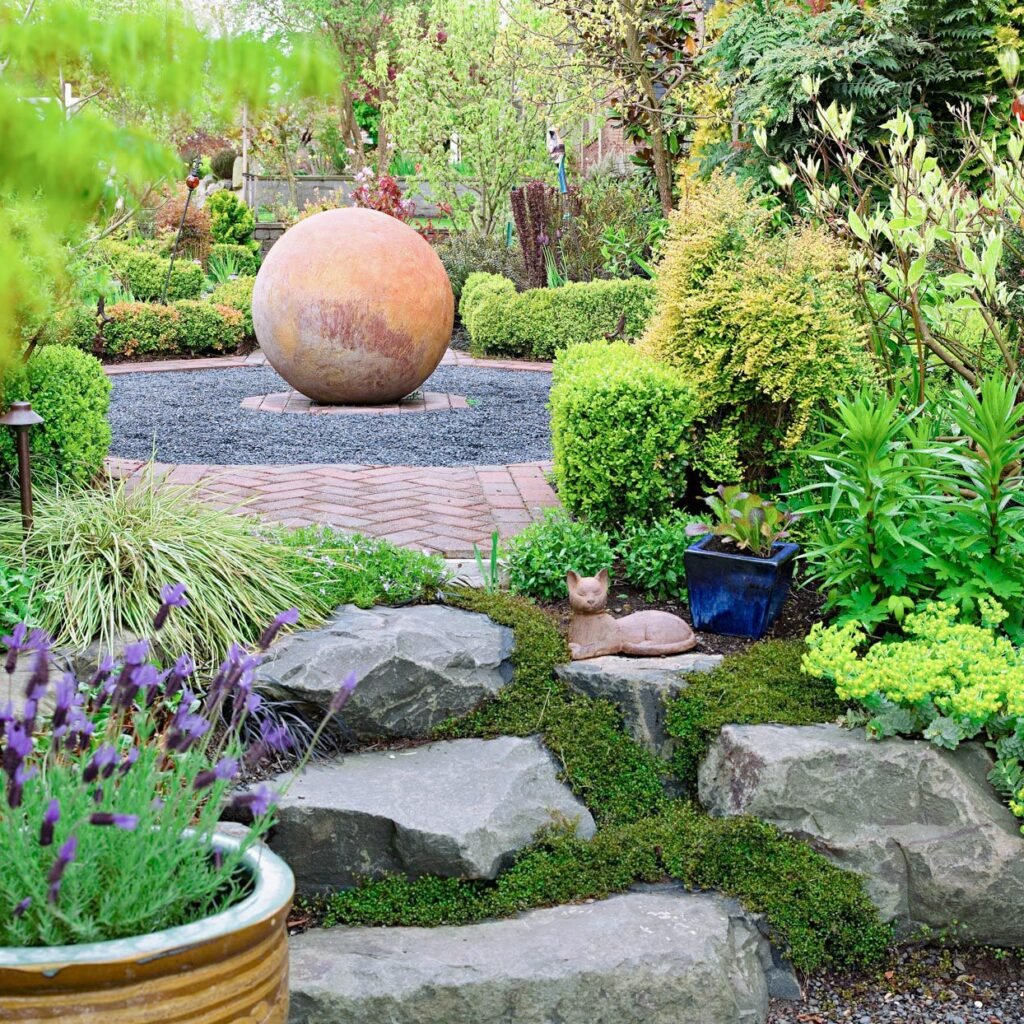
During severe droughts, it may not be feasible to water every plant equally. Prioritize:
- High-Value Plants: Plants with high ornamental or sentimental value, such as roses, lilies, and hydrangeas.
- Recent Plantings: Young plants or transplants that have not yet established deep roots.
- Flowering Plants: Blooms require more water to maintain their shape, color, and fragrance.
Less critical or drought-tolerant plants can survive with minimal watering, allowing limited water to be used where it has the most impact.
5. Grouping and Zoning
Creating watering zones improves efficiency:
- Hydrozoning: Group plants with similar water needs together. This prevents overwatering drought-tolerant plants and ensures water-intensive plants receive enough moisture.
- Container Zoning: Place potted plants with similar watering requirements together for targeted irrigation.
- Sun and Shade Consideration: Group plants according to sun exposure, as shaded plants generally require less water than those in full sun.
Zoning reduces water waste and ensures optimal hydration for all plants.
6. Use of Water-Saving Tools
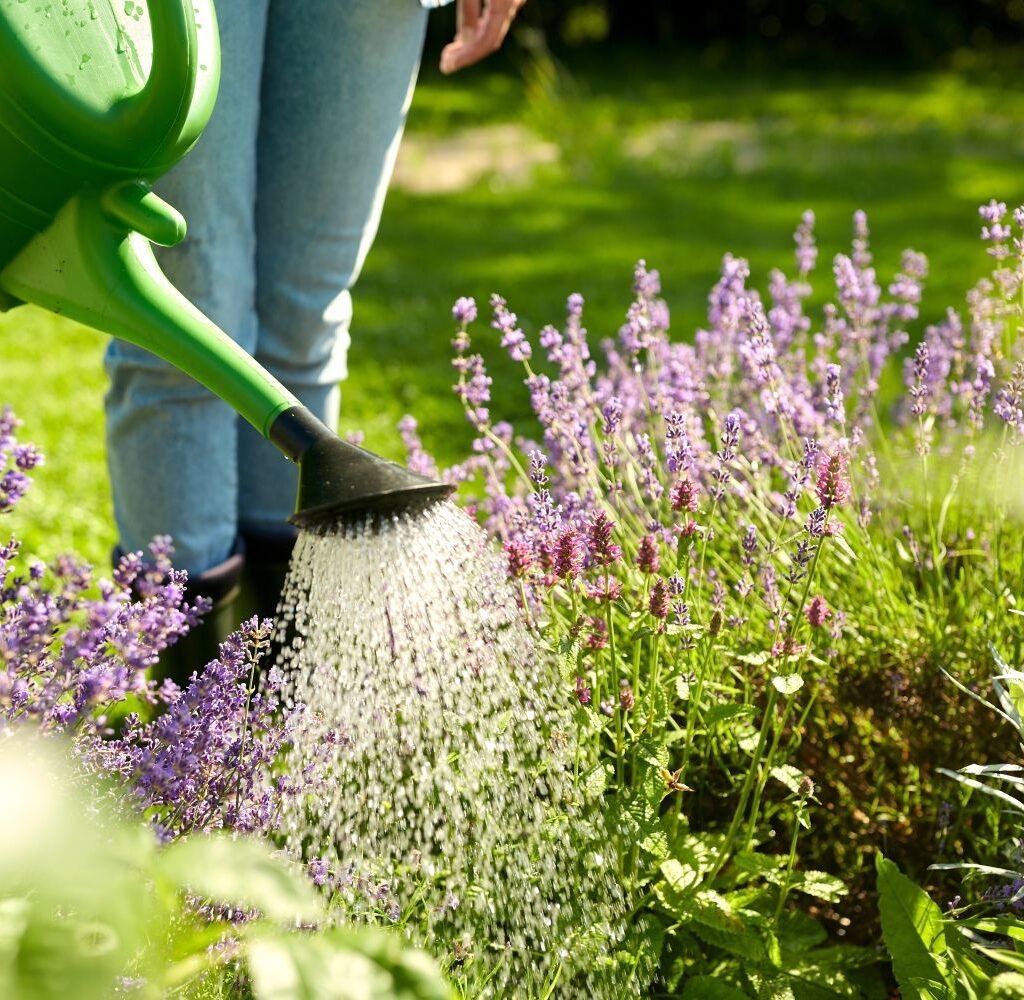
Modern gardening provides several tools that conserve water:
- Drip Irrigation: Delivers water directly to the root zone, reducing evaporation and runoff.
- Soaker Hoses: Low-pressure hoses that evenly saturate soil around plants.
- Rain Barrels: Collect rainwater for irrigation, providing a sustainable and cost-effective water source.
- Moisture Meters: Measure soil moisture to avoid unnecessary watering.
These tools maximize efficiency, particularly in regions with strict water restrictions.
7. Soil Management Practices
Healthy soil improves water retention and reduces plant stress:
- Organic Matter: Incorporate compost or leaf mold to improve soil structure and moisture-holding capacity.
- Avoid Compaction: Loosen soil around plants to allow better infiltration and root expansion.
- Raised Beds: Elevating soil can improve drainage while allowing water to penetrate deeper into the root zone.
Well-maintained soil ensures that plants make the most of limited water supplies.
8. Drought-Tolerant and Native Plants
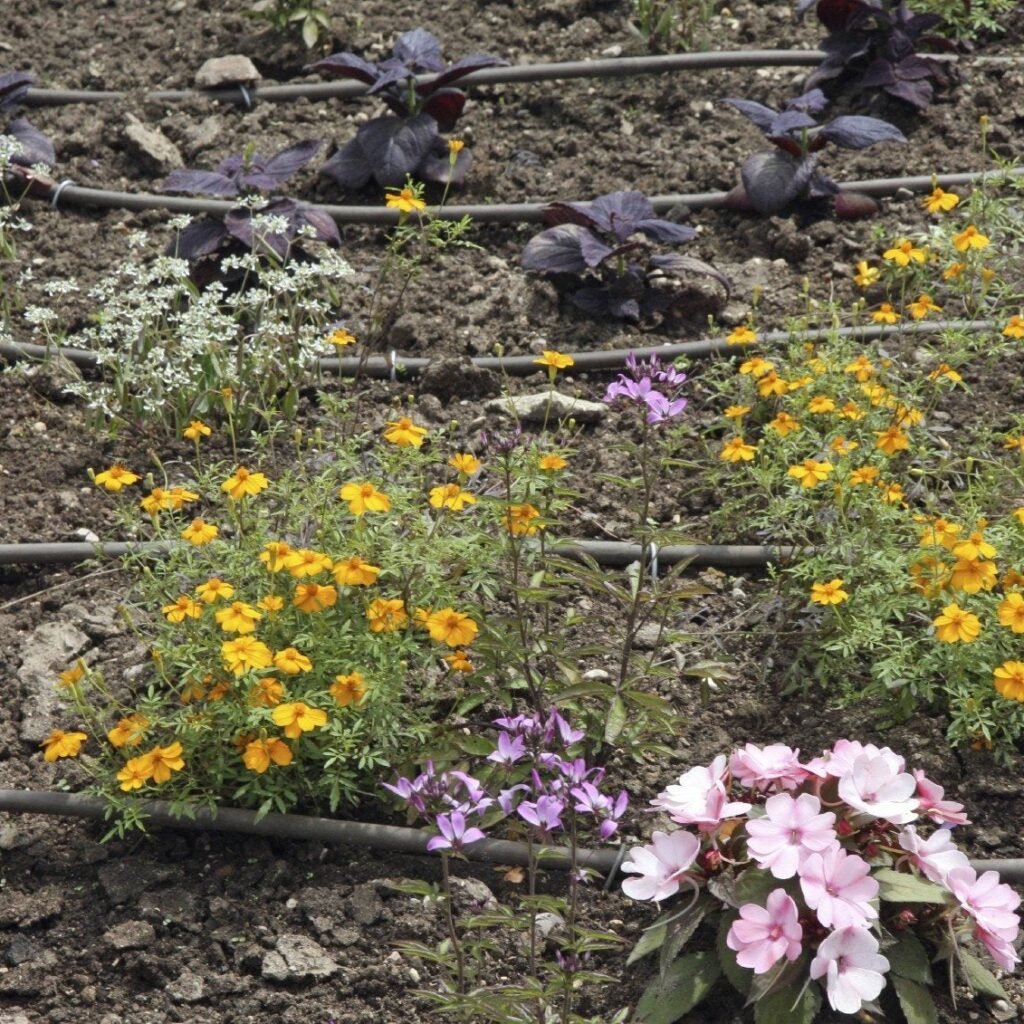
Plant selection is a critical component of managing flower gardens during droughts:
- Drought-Tolerant Species: Lavender, sedum, coneflowers, and yarrow thrive with minimal water.
- Native Plants: Native flowers are adapted to local climate conditions, making them resilient to dry spells.
- Succulents and Perennials: These plants store water in their leaves or roots, reducing dependency on frequent irrigation.
Using these plants reduces the need for supplemental watering while maintaining garden aesthetics.
9. Reduce Evaporation
Simple practices can minimize water loss:
- Wind Protection: Planting shrubs or using fences can reduce wind exposure that accelerates evaporation.
- Shading: Use temporary shade cloths for sensitive flowers during peak sunlight hours.
- Avoid Overhead Sprinkling: Watering at the base instead of overhead ensures water reaches the roots and reduces evaporation.
These small adjustments help water reach plants more effectively.
10. Monitor and Adjust
During droughts, constant observation is necessary:
- Check Soil Moisture: Use a trowel or moisture meter to determine soil conditions before watering.
- Inspect Plants: Signs of wilting, leaf curling, or discoloration indicate water stress.
- Adjust Frequency: Watering needs may change with temperature, rainfall, and plant growth stage.
Regular monitoring ensures plants receive water only when necessary, conserving resources while maintaining health.
11. Seasonal and Long-Term Strategies
Beyond immediate watering, long-term planning reduces drought stress:
- Mulch Year-Round: Maintain a layer of mulch even outside peak drought periods.
- Planting Calendars: Plan bloom cycles so water-intensive plants do not peak during the hottest months.
- Soil Improvement: Continuous addition of organic matter improves soil resilience.
- Rain Gardens: Design areas to capture and store rainwater for later use in drought periods.
These strategies make gardens more resilient to future droughts and reduce reliance on supplemental irrigation.
Conclusion
Watering flower gardens during droughts requires a combination of planning, efficient techniques, and plant selection. By understanding plant water needs, watering at optimal times, using deep watering and mulching techniques, prioritizing critical plants, grouping by water needs, and incorporating drought-tolerant species, gardeners can maintain healthy and vibrant flower beds even under water-scarce conditions. Tools such as drip irrigation, rain barrels, and moisture meters further enhance water efficiency. With consistent monitoring, soil improvement, and long-term planning, gardeners can conserve water while ensuring their flower gardens continue to bloom beautifully, providing color, fragrance, and ecological benefits throughout the season.
